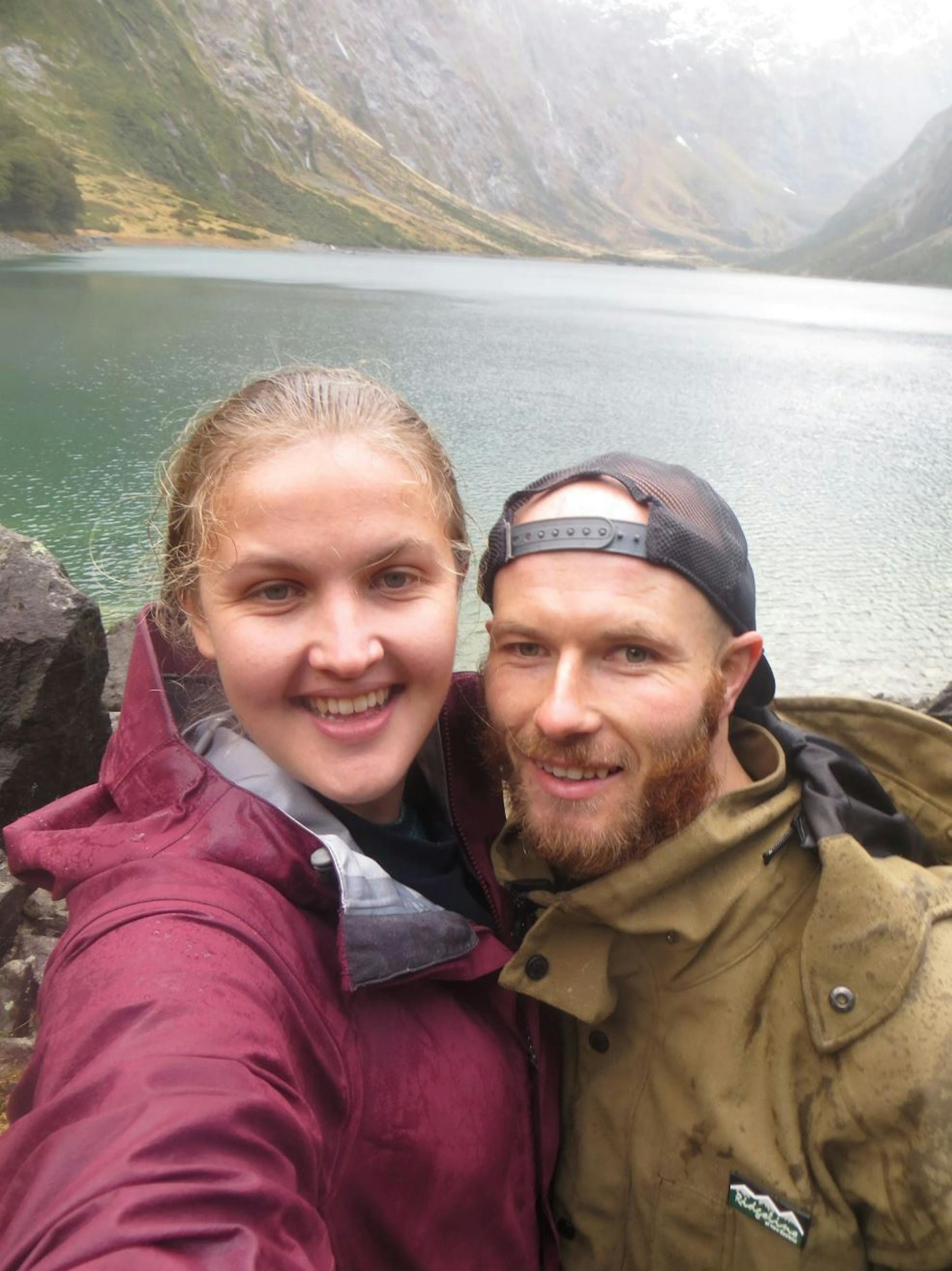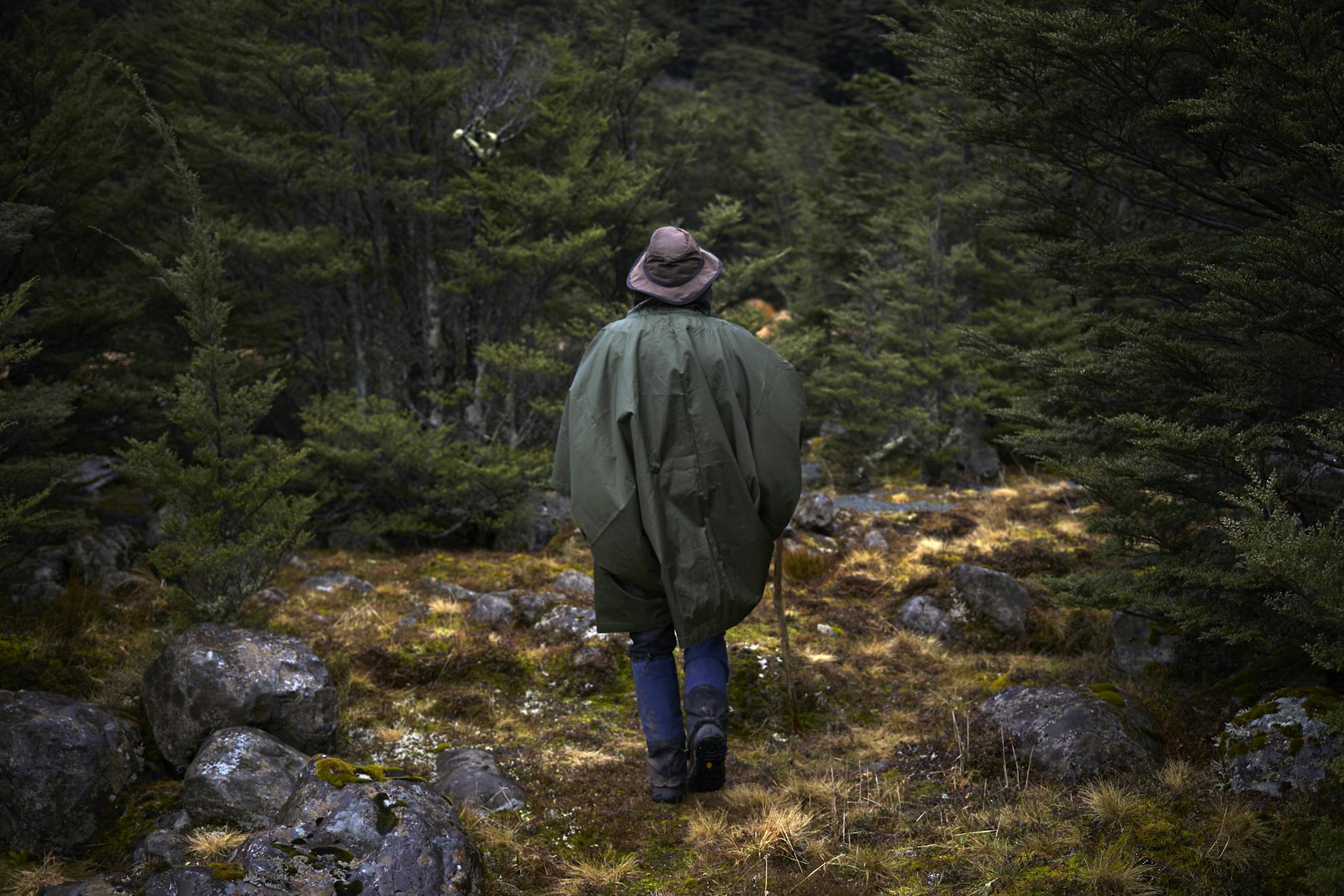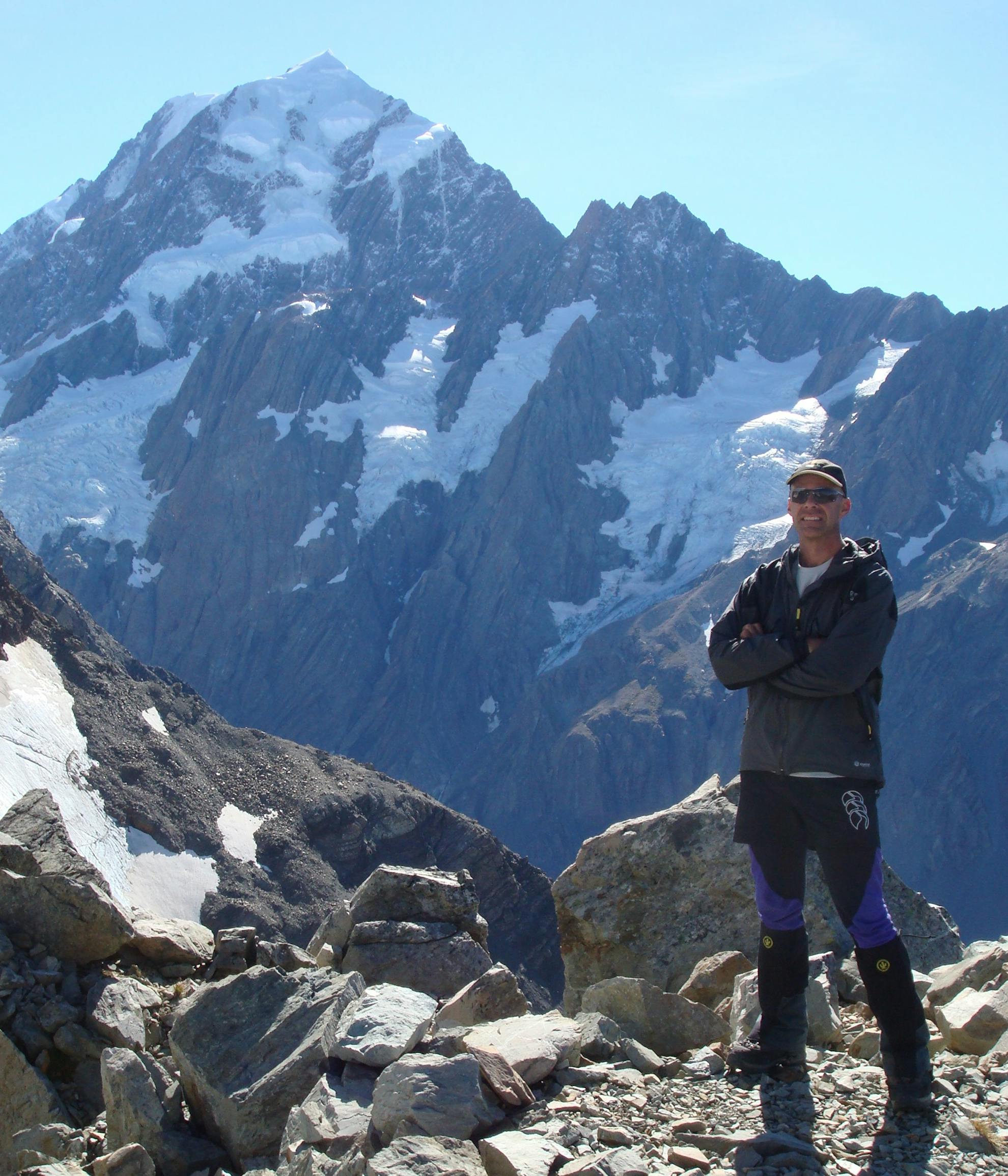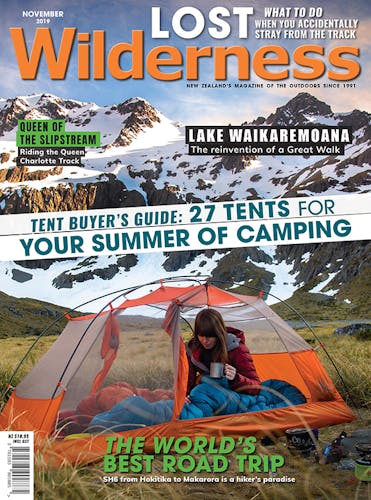You’ve lost the track, you don’t have a PLB, and the sun is going down – what can you do to get yourself out of danger?
Moments. That’s all it can take to descend into danger.
A missed marker, upside down map, or a wrong turn – it’s unfair how benign a catalyst of catastrophe can be, but getting lost can happen to even the most experienced.
The rise of cellphones and PLBs have made it easier than ever for lost trampers to find their way out of danger, but what can you do if you can’t call for help?
According to Mountain Safety Council’s tramping incident report A Walk in the Park?, an average of 10 trampers a week are involved in a search and rescue incident.
Pete Whalley and his partner Erica Smith weren’t prepared for an overnight tramp when they set out for a day walk in the Waiohine Gorge in Tararua Forest Park.
It was early June and the couple was making the most of Queen’s Birthday weekend.
The plan was to follow the Cone Hut Track to Cone Saddle, sidle down the ridgeline to the Waiohine River and link up with the Lower Waiohine Track which would lead them back to their car. But it wasn’t to be.
“Unfortunately, a few markers had fallen down and the ridgeline track wasn’t super clear,” Whalley says. “We hit what we thought was a major river and started to follow it back, assuming it would marry up with the track.”
Unbeknown until the following day’s hindsight, the river they were following was a tributary of their intended handrail of the Waiohine River, and it was whisking them off course.
As afternoon turned to evening, the sun dropped below the gorge’s walls, bringing premature darkness to the dense bush.
“You start to panic a bit, especially when it starts to get dark, which is pretty bloody scary,” Whalley says.
“Once we realised we were going to be there overnight, we calmed down and between us we managed to come up with a plan, but there were a few choice words exchanged that’s for sure.”
The couple moved to higher ground and took stock of their gear and situation.

“Fortunately we had a survival blanket and a gas cooker as we had taken soup for lunch, so I heated up some water and scroggin – scroggin soup – and piled up some ferns to sleep on,” Whalley says.
It was a largely sleepless night for the couple, who struggled to stay warm and comfortable on the cold ground.
Both had wet boots and thermals from the river, but kept everything on to reduce further heat loss.
When daylight returned, the couple backtracked to the ridgeline to get their bearings.
They found phone signal enough to load a map, but not to make a call, and made a line towards Cone Saddle.
To their relief, they intersected the Cone Hut Track after an hour of steep bush-bashing and returned to the car without further issue.
“We were lost only a couple of kilometres from the track, but it goes to show, in dense bush where you can’t see anything, two-kilometres could take you five hours,” Whalley says.
The couple’s decision-making and navigational know-how allowed them to self-resolve their situation, but Whalley says he has never lived it down.
“I still hear about this event every time we go tramping,” he says.
LandSAR NZ group support manager Mike Ambrose says no single piece of advice can be applied to all lost trampers, but recommends slowing down and taking stock of the situation as a good first step.
“It does come with a proviso though – if you’re in imminent danger, taking immediate action to keep yourself safe will be a high priority,” he says.
“But if you’re in a situation where you’re lost, you’re going to find it hard to take stock if you’re in reaction mode – you have to take time out and do some thinking. That’s the best piece of advice.”
A principle to always keep in mind, he adds, is that whatever judgment you make shouldn’t make your situation worse.
“You don’t want to go from a situation where you are lost, but warm and comfortable, to a situation where you’re lost, bluffed, you’ve trashed your gear and you’re wet. You want to avoid any ratcheting down of your situation,” he says.
Should I stay or should I go?
Perhaps the biggest decision to make when lost is whether to stay put or try and self-resolve the situation, Ambrose says.
“Start applying criteria considerations – what will happen if you take no action in your situation? You might be safe now, but what if it starts raining or the temperature drops 10 degrees? Is that going to make your situation more urgent?” he says.
“Staying put is a high safety strategy if you know somebody is coming for you, and you’ve got equipment, clothing and food.
“It is a poor option, however, if no one knows you’re missing, and there are foreseeable threats if you just sit there.”
Staying alive must be given paramount importance in all decision making. Being late for other commitments, inconveniencing others or getting a bit hungry are minor considerations that should not be influencing your thinking at this point.
A tramper lost on day one of a five-day trip, for example, might be better off trying to reorient themselves, rather than stay put for five days until it is noticed they are missing.
A daywalker, on the other hand, would likely be better off staying close to where they came off track – assuming they have left their intentions, and somebody will come looking for them.
If you lose the track, it can do more harm than good to try and re-find it if you’ve lost your sense of direction.
“A question to ask yourself is; how far away are you from the intentions you left?” Ambrose says.
“The more action you take to self-resolve, the further you might be pushing away from what your expected location could be.”
If you do act, it is better to attempt strategies that err on the side of safety and are reversible, if they are not successful.
If you’re questioning whether splitting the party will result in more success, Ambrose says the answer is generally no.
“There are few instances where it would do good and from a search and rescue perspective, it usually results in two situations to resolve, rather than one.”
If you decide to stay put, keep yourself as warm and dry as possible, and make your location obvious to search and rescue with colourful gear, fire or torchlight. If possible, move to a clearing where you will be visible from the air.

Getting out
Search and Rescue operations will not be directed at random and it is important to think and act in a way that is predictable to those looking for you.
Years of research into missing person behaviour has revealed patterns into how disoriented trampers are likely to behave, and local search and rescue teams will know from experience which parts of the track are problematic.
“Make the assumption that there will be limitations in search and rescue resources, and when they are looking at possible scenarios, they will go with the things that make the most sense first – investigating unlikely scenarios will be a lower priority,” says Ambrose. Be aware that the effects of fatigue will start impairing judgement and rash decisions when cold, tired or hungry need to be avoided.
Common behaviours for disoriented trampers include climbing to higher ground to get a better lay of the land or to search for a phone signal, following linear features such as rivers, ridgelines and fences, and following animal trails.
The idea of following a river to safety may sometimes hold true in the New Zealand backcountry, but Ambrose believes the idea has its origins in other parts of the world.
“In New Zealand, the likelihood of encountering waterfalls, rapids and gorges means it might be unreliable and unsafe,” he says.
“Attempting a dodgy river crossing or a gorge is going to kill you faster than hypothermia, which links back to the point about minimising the rate your situation gets worse.”
Leaving inessential items behind can provide life saving clues for the search and rescue operation.
“Finding stuff is almost as valuable as finding a person, as it means you can latch onto their trail,” Ambrose says.
Toilet paper stuck on twigs, arrows made of sticks, broken twigs, discarded gear and obvious boot prints stomped into soft ground are all indicators that the rescue team will be searching for.
Light and sound are also valuable tools, Ambrose says, particularly the use of a light source after dark.
Torch or cellphone lights can be used to great effect, especially if there is an aerial search.
“If you hear a faint whistle, make as much noise as you can. The search and rescue team will be whistling, then stopping and listening for a response – they’re not going to hear you if you’re yelling half-heartedly,” he says.

Your best weapon
Preparation is every tramper’s best defence against getting lost.
Leaving accurate intentions with friends, family or online via AdventureSmart and signing hut and campsite guest books with your intended route will give search and rescue teams a huge head start in narrowing their search parameters.
Ambrose suggests carrying a map and compass and familiarising yourself with hazards and landmarks on your route, and reading up on the track standard so your expectations are accurate.
Trampers should also get into the habit of packing essential safety items, no matter the duration or difficulty of their route.
This includes ample food and water, warm and waterproof layers, first aid, a head torch and PLB.
And if you do find yourself lost, take comfort in the knowledge that most people are rescued, or, like Pete and Erica, manage self-rescue.
MSC’s A Walk in the Park? found that 80 per cent of all New Zealand search and rescue incidents are resolved within just six hours, and four per cent take longer than 24 hours.
Nearly two thirds of search and rescue operations are for lost, missing or overdue people.
Pete and Erica had enough collective experience to make it home safely, but Whalley says the couple has become more cautious about their tramping.
“We laugh about it now, and we’re still together – we didn’t let one bad experience put us off,” he says.
You’re lost, what now?
Stay put: If you’ve left your intentions, and you know somebody will soon come looking for you, stay as close as you can to the point you came off track. Layer up, keep warm and dry, and make yourself visible to aerial searches by spreading colourful gear around in a clearing or using a light source if dark.
Move: If nobody knows where you are, or it’s likely to take days for your absence to be noticed, you may be best to self-resolve your situation. Seek higher ground to survey the land, and leave a trail of inessential gear, toilet paper or bush markers – such as broken branches, footprints in mud, or arrows made from twigs.








